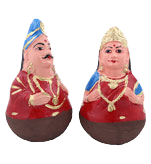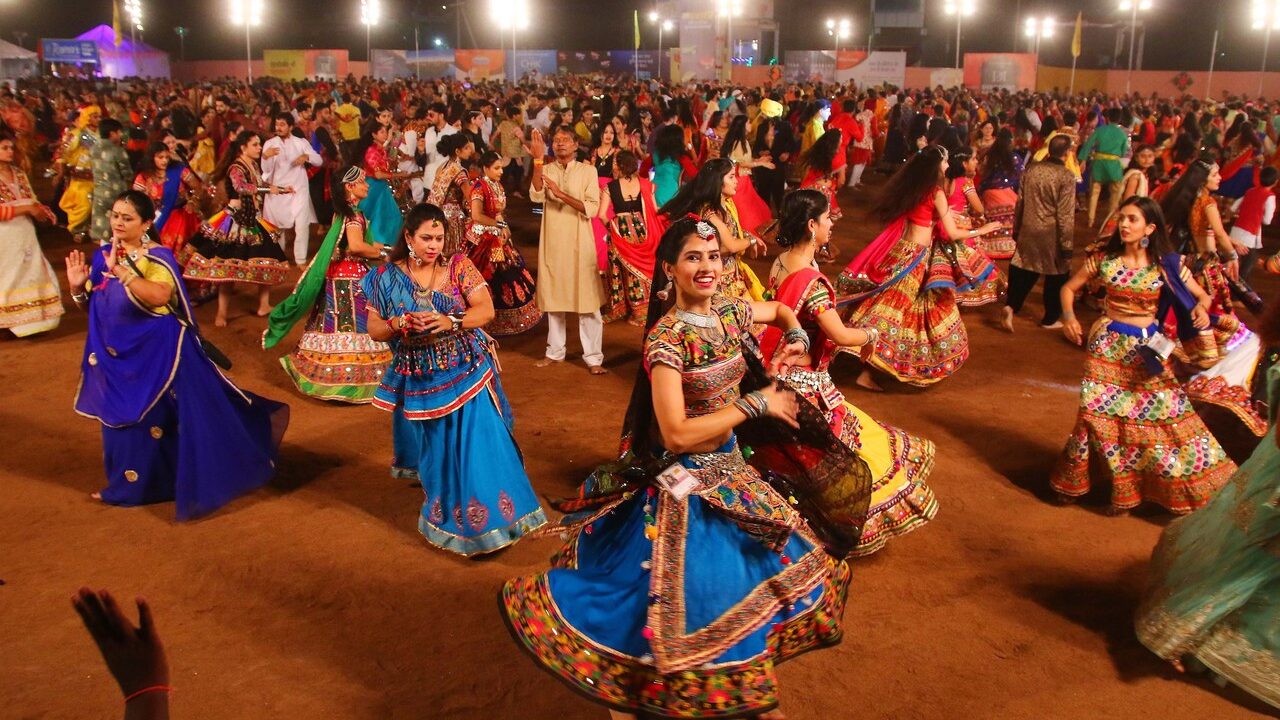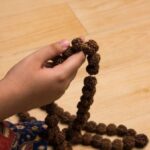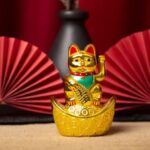Navratri is one of the most celebrated Hindu festivals. It lasts nine days and is dedicated to the nine forms of Goddess Durga. In 2024, the festival will be observed from October 3 to October 12. Every day carries its own spiritual significance, with a distinct ritual, prasad, and colour associated with the goddess worshipped. Here’s an exploration of each day, along with the Tithi (date) and associated practices.
Day 1: October 3, 2024 – Thursday
The first day of Navratri is devoted to Goddess Shailaputri, the daughter of the mountains. Her name means “daughter of the mountain,” and she symbolizes strength, resilience, and the grounding energy of nature. This day signifies new beginnings and stability in life.
- Prasad Offered: Ghee (clarified butter) is offered to the goddess, symbolizing purity and dedication.
- Tithi: Pratipada
- Puja: Ghatasthapana, Shailputri Puja
Day 2: October 4, 2024 – Friday
On the second day, Goddess Brahmacharini is worshipped. She represents penance, devotion, and spirituality and teaches devotees the importance of perseverance and discipline.
- Prasad Offered: Sugar, representing simplicity and devotion, is offered to seek her blessings.
- Tithi: Dwitiya
- Puja: Chandra Darshana, Brahmacharini Puja
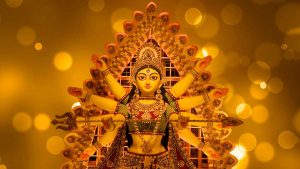
Day 3: October 5, 2024 – Saturday
The third day is dedicated to Goddess Chandraghanta, who symbolizes courage and strength. Known for her warrior-like stance, she represents the inner strength needed to fight against negativity.
- Prasad Offered: Milk and sweets are given as offerings, symbolizing peace and harmony.
- Tithi: Tritiya
- Puja: Sindoor Tritiya, Chandraghanta Puja
Day 4: October 6, 2024 – Sunday
On this day, Goddess Kushmanda is worshipped. She is believed to be the creator of the universe and radiates warmth and positivity. Her worship helps eliminate darkness and negativity from one’s life.
- Prasad Offered: Malpua (a sweet pancake) or Khichdi is offered, symbolizing prosperity and abundance.
- Tithi: Chaturthi
- Puja: Vinayaka Chaturthi
Day 5: October 7, 2024 – Monday
On the 5th day, Goddess Skandamata is worshipped. She represents motherhood, compassion, and protection. She is the mother of Lord Skanda (Kartikeya) and blesses her devotees with wisdom and love.
- Prasad Offered: Banana is offered as a prasad, symbolizing nourishment and fertility.
- Tithi: Panchami
- Puja: Kushmanda Puja, Upang Lalita Vrat
Day 6: October 8, 2024 – Tuesday
The sixth day is dedicated to Goddess Katyayani, a warrior form of Durga. Known for her fierce nature, she signifies courage, strength, and the destruction of evil.
- Prasad Offered: Honey, representing sweetness and fulfilment, is offered to seek her blessings.
- Tithi: Shashthi
- Puja: Skandamata Puja
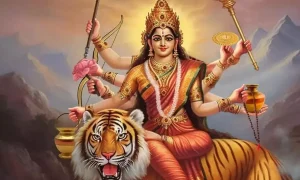
Day 7: October 9, 2024 – Wednesday
Goddess Kalaratri is worshipped on the seventh day. She is the most ferocious form of Durga, representing the power to eradicate fear and negativity. Her worship instils courage and protection.
- Prasad Offered: Jaggery, representing strength and vitality, is offered to the goddess.
- Tithi: Saptami
- Puja: Saraswati Avahan, Katyayani Puja
Day 8: October 10, 2024 – Thursday
The eighth day, known as Ashtami, is devoted to Goddess Mahagauri, representing purity, serenity, and peace. This day often involves the Kanya Puja, where young girls are honoured as embodiments of the goddess.
- Prasad Offered: Coconut is offered, which symbolizes purity and devotion.
- Tithi: Ashtami
- Puja: Saraswati Puja, Kalaratri Puja
Day 9: October 11, 2024 – Friday
On the ninth day, Goddess Siddhidatri is worshipped. She bestows wisdom, knowledge, and success to her devotees. This day signifies the completion of the journey toward spiritual fulfilment.
- Prasad Offered: Sesame seeds are offered, which symbolize prosperity and health, are offered to the goddess.
- Tithi: Navami
- Puja: Durga Ashtami, Mahagauri Puja, Sandhi Puja
Day 10: October 12, 2024 – Saturday
The final day is celebrated as Vijayadashami or Dussehra, marking the triumph of good over evil. It signifies the victory of Goddess Durga over the demon Mahishasura and Lord Rama’s victory over Ravana.
- Prasad Offered: Various sweets and traditional dishes are prepared to celebrate the conclusion of Navratri.
- Tithi: Dashami
- Puja: Ayudha Puja, Navami Homa, Vijayadashami, Durga Visarjan
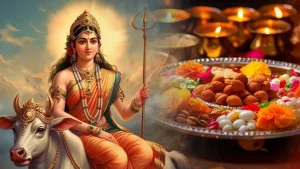
The Significance of Navratri Colours in 2024: A Day-by-Day Guide
During Navratri, wearing dresses and accessories matching the day’s colour is popular. Whether you are going to work or participating in Dandiya and Garba dances, each day of Navratri brings a new colour theme that adds to the festive excitement. The colours symbolize different energies and emotions associated with the goddess worshipped each day. Wearing these colours helps channel the goddess’s energy and ensures an auspicious celebration. Here’s how you can incorporate them into your Navratri celebrations:
- Yellow (Day 1): Start your Navratri journey with a bright yellow outfit, symbolizing happiness and positivity. It sets a joyful tone for the festival.
- Green (Day 2): Embrace the colour of growth and harmony. Wear green clothing or accessories to bring peace and serenity into your life.
- Grey (Day 3): Choose grey for a balanced and grounded appearance. This neutral colour is perfect for understated elegance.
- Orange (Day 4): Orange embodies warmth and enthusiasm. Wear an orange dress or scarf to keep your energy levels high.
- White (Day 5): Choose white on the fifth day to reflect purity and calmness. This colour is ideal for traditional wear, such as sarees or kurtas.
- Red (Day 6): Red is powerful and dynamic. Incorporate this colour in your outfit to feel confident and passionate.
- Royal Blue (Day 7): Dress in royal blue for a touch of sophistication and luxury. It adds a regal aura to your celebrations.
- Pink (Day 8): Pink represents love and tenderness. Wearing pink will add a charming and approachable vibe to your look.
- Purple (Day 9): Go for purple to symbolize grandeur and nobility. It’s perfect for the final day of prayers and celebrations.
- Peacock Green (Day 10—Vijayadashami): This vibrant colour represents uniqueness and intelligence. Wear peacock green in your attire as you celebrate the victory of good over evil.
Spiritual Significance of Navratri
Navratri holds profound spiritual significance, representing the victory of good over evil, the triumph of light over darkness, and the celebration of divine feminine energy. The festival embodies Goddess Durga’s journey through her nine forms, each reflecting different aspects of existence:
- Strength and Courage: Navratri reminds devotees to draw strength from within, just as Goddess Durga battled evil forces.
- Purification: The nine days signify a spiritual cleanse, where devotees rid themselves of negative thoughts and habits.
- Prosperity and Knowledge: The final days of Navratri, dedicated to Saraswati, are believed to bring wisdom, wealth, and inner peace.
How Navratri Rituals Are Carried Out in Different Places
Navratri is celebrated differently across India, with each region showcasing its unique traditions. In West Bengal, it is known as Durga Puja, where elaborate idols of Goddess Durga are placed in beautifully decorated pandals (temporary structures). Rituals begin on the sixth day, known as Shashthi. The last three days—Saptami, Ashtami, and Navami—are marked by grand celebrations, aarti, and cultural programs.
Gujarat is famous for its Garba and Dandiya Raas dance performances. People gather in large groups, dressed in vibrant attire, to dance and celebrate. In Maharashtra, during Navratri, women wear traditional sarees in the day’s colour, perform aarti, and offer sweets to the goddess. Each household holds special prayers, and women gather to exchange haldi-kumkum as a symbol of goodwill.
The Ayudha Puja is a prominent feature of Navratri celebrations in Kerala. On the ninth day, people worship tools, books, and musical instruments, seeking blessings for knowledge and skill. The tenth day, called Vidyarambham, is an auspicious day when children begin formal education. In Tamil Nadu, we see Golu set up in homes, depicting mythological scenes and stories. Families invite friends and neighbours to view the Golu, and sandal offerings (a chickpea dish) are distributed.
Navratri is a blend of spirituality, culture, and devotion that unites people across India. Each day offers an opportunity to connect with the divine energy of Goddess Durga, bringing blessings of strength, wisdom, and prosperity. By understanding the significance of each day and embracing the rituals, devotees can experience the true essence of Navratri, making it a journey of spiritual awakening and celebration.

